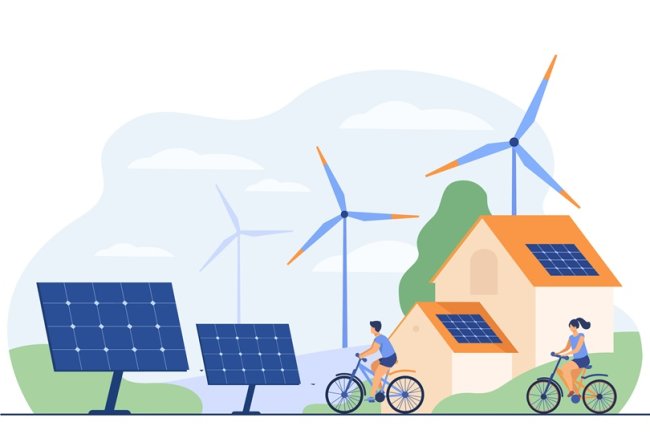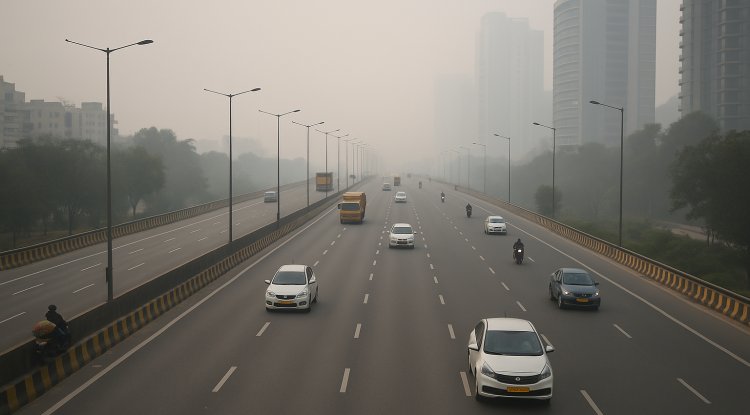Jobs, Hunger & Larger Purpose: The Socio-spiritual Vision Of VHT
The Vrindavan Heritage Tower aims to blend spiritual purpose with social impact by creating jobs, uplifting communities, and fostering a culture of conscious living rooted in service and sustainability

Beyond its sacred mission and sustainability goals, the Vrindavan Heritage Tower is envisioned as a powerful economic and spiritual engine for community transformation. For Sri Chanchalapati Dasa, who leads the initiative, true impact lies in how deeply the project integrates service — through jobs, education, ethics, and the upliftment of human dignity.
He remembers a telling interaction in a village. “One of them said, if Akshaya Patra comes to our village and our son gets a job there, he will get a very good wife — because you give good salary. And then he will get a good wife. Everything will be settled.”
“It was a very genuine answer,” he smiles. “That’s the way they are thinking — that it’s a good job, good family, good life.”
9,000 Jobs, and the Power of Local Inclusion
With the Vrindavan Heritage Tower nearing its next phase, the scale of local economic opportunity is massive. “We were calculating how many rooms we will have — around 1,500 rooms of all types. And each room creates about three jobs — housekeeping, laundry, front desk, cooks, cleaners.” That’s 4,500 direct jobs, and more in gardens, landscape, and maintenance.
“In total, this project will create about 9,000 direct jobs, and three times that in indirect jobs — like rickshaw drivers, vendors, and service providers. So you can see the socio-economic impact this project is going to create.”
But the focus isn’t just on employment — it’s on local employment.
“We want local people to get jobs, not just workers from other states,” he says. “So we’re working with NGOs on skill-building programmes for drivers, cooks, housekeeping, maintenance. This is another kind of a community engagement.”
Already, in phase one, the project employs 825 people. “We’ll be one of the biggest employers in Vrindavan.”
Hunger, Scale, and Dignity Through Partnership
Sri Chanchalapati Dasa also reflects on Akshaya Patra’s two-decade journey. “We started with 500 to 600 children. Today we are feeding 1.2 lakh children in Mathura district daily. Across India, 22 lakh children are served every day in 78 locations, spanning 17 states and 2 union territories.”
“Our country has numbers. If you want to do something, you have to scale. Otherwise you’re just barely scratching the surface.”
What makes this model sustainable is partnership with the government. “I think we are probably the largest public-private partnership in the social sector in the country. We’ve worked with the government for 21 of the last 25 years.”
In 2023–24 alone, Akshaya Patra received ₹370–400 crore in support from various state governments. “And our total top line was ₹750–800 crore,” he says. “The rest came from corporate and individual donations.”
What stands out is the integrity. “We received all of this ₹400 crore without paying a single paisa back into the system. We sensitise people — this is children’s money. Let it go to children.”
He acknowledges the common public sentiment about working with the government. “People told us, be careful — you know how the government is. But we’ve worked hard to build trust. In our temples, we may give them a Janmashtami pass as a token. But we stand by our values.”
A Larger Journey — Home to the Divine
For Sri Chanchalapati Dasa, spiritual education is the ultimate foundation — and the ultimate solution.
He tells a simple story of a boy returning home after three years. “He came from a not-so-affluent family. He took a 24-hour train journey without a reserved seat, no food, no sleep. But the 24 hours passed in a flash — because he was constantly thinking, I am going home, I will be with my father, my mother, my family. The joy of reunion made all discomfort irrelevant.”
“This is what Krishna is inviting us to — Yad gatvā na nivartante tad dhāma paramam mama — come to My abode, come home, and you won’t have to suffer anymore. Every religion talks about returning to the Kingdom of God.”
But the words of the Bhagavad Gita are not just faith — “They are like an act passed by Parliament. If it says: this is the tax, this is the deduction — we read line by line with seriousness. Similarly, Bhagavad Gita should be read with that level of seriousness.”
“Our Acharya Srila Prabhupada used to say, we should know Vedic literature like a lawyer knows the law. Krishna is teaching us: this human life is a journey to attain Him. When that becomes the lofty goal, greed vanishes. You stop thinking of more and more possessions.”
“Today’s world teaches the joy of accumulating more. Krishna teaches the joy of renunciation — the joy of being carefree.”
He then recites a verse from the Gita:
jñāna-vijñāna-tṛptātmā kūṭastho vijitendriyaḥ
yukta ity ucyate yogī sama-loṣṭrāśma-kāñcanaḥ
“The one who is fulfilled by knowledge and realisation, who has conquered the senses, is situated in equilibrium. He sees gold and stone as equal. That person is truly happy.”
He continues, “Today we build civilisation on sense gratification. But senses are never satisfied. You want more and more. So Krishna offers another way — a joy rooted in knowledge, not in acquisition.”
“We need a new vocabulary of happiness. Not joy of more, but joy of meaning. That’s what the Heritage Tower is about — teaching people that happiness lies not in having more, but in being more.”
Innovation Must Be Spiritual Too
He acknowledges modern solutions often rely on innovation. “People say — technology will save us. Yes, a culture of innovation is important. But now, we also need spiritual innovation. And Krishna is teaching just that.”
Facing Practical Challenges in Building Green
But living these ideals on a large project is not always easy.
“The biggest challenge is cost. If a regular solution costs ₹100, a sustainable one may cost ₹150. But we’re committed to going the extra mile.”
They avoid single-use plastics, use reusable containers and water systems. “But it takes education, awareness, and retraining people.”
He mentions waste segregation as another tough area. “It requires effort. If you mix everything, the system breaks down. So we’re working hard to create a culture of consciousness.”
What's Your Reaction?

















